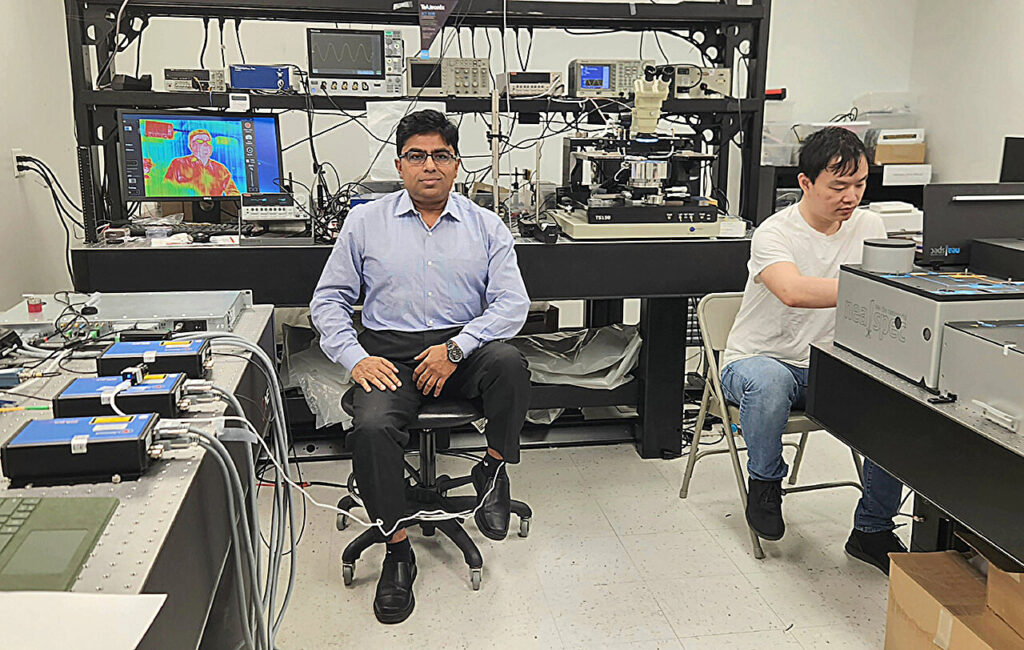University of Central Florida (UCF) researcher Debashis Chanda, a professor at UCF’s NanoScience Technology Center, has developed a new technique to detect long wave infrared (LWIR) photons of different wavelengths or “colors.”
The research was recently published in Nano Letters.
The new detection and imaging technique will have applications in analyzing materials by their spectral properties, or spectroscopic imaging, as well as thermal imaging applications.
Humans perceive primary and secondary colors but not infrared light. Scientists hypothesize that animals like snakes or nocturnal species can detect various wavelengths in the infrared almost like how humans perceive colors.
Infrared, specifically LWIR, detection at room temperature has been a long-standing challenge due to the weak photon energy, Chanda says.
LWIR detectors can be broadly classified into either cooled or uncooled detectors, the researcher says.
Cooled detectors excel in high detectivity and fast response times but their reliance on cryogenic cooling significantly escalates their cost and restricts their practical applications.
In contrast, uncooled detectors, like microbolometers, can function at room temperature and come at a relatively lower cost but exhibit lower sensitivity and slower response times, Chanda says.
Both kinds of LWIR detectors lack the dynamic spectral tunability, and so they can’t distinguish photon wavelengths of different “colors.”
Chanda and his team of postdoctoral scholars sought to expand beyond the limitations of existing LWIR detectors, so they worked to demonstrate a highly sensitive, efficient and dynamically tunable method based on a nanopatterned graphene.
Tianyi Guo is the lead author of the research. Guo completed his doctoral degree at UCF in 2023 under Chanda’s mentorship. This newly discovered method is the culmination of the research that Guo, Chanda and others in Chanda’s lab have performed, Chanda says.
“No present cooled or uncooled detectors offer such dynamic spectral tunability and ultrafast response,” Chanda says. “This demonstration underscores the potential of engineered monolayer graphene LWIR detectors operating at room temperature, offering high sensitivity as well as dynamic spectral tunability for spectroscopic imaging.”
The detector relies on a temperature difference in materials (known as the Seebeck effect) within an asymmetrically patterned graphene film. Upon light illumination and interaction, the patterned half generates hot carriers with greatly enhanced absorption while the unpatterned half remains cool. The diffusion of the hot carriers creates a photo-thermoelectric voltage and is measured between the source and drain electrodes.
By patterning the graphene into a specialized array, the researchers achieved an enhanced absorption and can further electrostatically tune within the LWIR spectra range and provide better infrared detection. The detector significantly surpasses the capabilities of the conventional uncooled infrared detectors—also known as microbolometers.
“The proposed detection platform paves the path for a new generation of uncooled graphene-based LWIR photodetectors for wide ranging applications such as consumer electronics, molecular sensing and space to name a few,” Chanda says.


